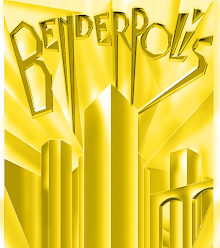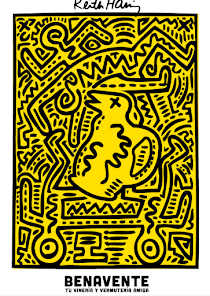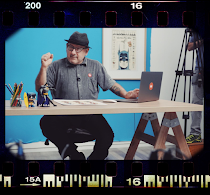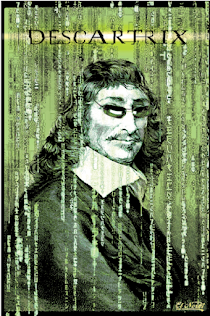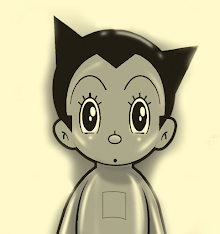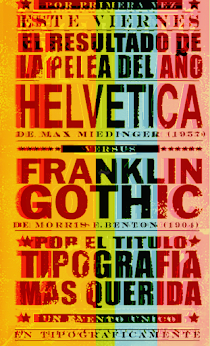Lo Mejor 2012: Cómo hacer arte con 35.000 subtepass de New York
Las redes y los portales explotaron con esta especie de arte povera (del italiano "arte pobre"). Esa especie de vanguardia que se había dado a conocer a finales de los sesenta, y cuyos creadores utilizan materiales considerados 'pobres', de muy fácil obtención, volvía a tener plena actualidad con el arte de la alemana Nina Boesch. Ella no había tenido mejor idea que usar los cartones de los viajes en el subte de Nueva York para hacer ilustraciones terriblemente realistas. Y Visualmente habló con Boesch, en un reportaje exclusivo, que te ofrecimos el viernes 24 de agosto pasado.
La alemana Nina Boesch se graduó en el prestigioso RISD (Rhode Island School of Design) en 2006, con honores. Su trabajo ha sido honrado por el Art Directors Club, el Type Directors Club, Adobe y AIGA. Pero se ha hecho famosa casi por casualidad. Hace 11 años, Boesch llega a Estados Unidos por un programa de intercambio. Tenía poco dinero y quería hacerle un regalo a la familia que pensaba hospedarla en New Jersey. Lo único que tenía en sus bolsillos eran los MetroCards utilizados. Así que les hizo un mapa de los Estados Unidos con los recortes de esas tarjetas de cartón. Si querés ver esa técnica en detalle, entrá ahora a Chillartpara ver la cara freak del cómico norteamericano Conan O'Brien. A continuación, en exclusiva para Visualmente, Nina Boesch nos cuenta qué hizo con las 35.000 tarjetas de subte que ha cortado hasta ahora.
1. How did the idea of making collages with NY Metro cards?
When I first came to the U.S. from Germany I kept my MetroCards after every ride. After about a year, I had collected so many cards that I felt like I needed to find a purpose for them. I also needed a gift for my host-family and was on a very limited budget. So I simply cut up my MetroCards, sorted the little pieces by colors and create a collage of a U.S. map, which I framed and gave to my host-family as a present. They loved the idea and motivated me to create more collages like that.
2. How is the process of working for one of the works, for example, Woody Allen?
First, I create a pencil drawing of the motif I would like to turn into a collage. A very rough outline drawing... nothing too detailed. As a base I use all kinds of surfaces: canvas, canvas board, paper, wood, acetate, etc. And then I start glueing the small pieces of cut-up MetroCards onto the pencil drawing. The process feels like a combination of painting and doing a jigsaw puzzle, because I fill in the pencil outline with colors I think may look good. Oh, and I pre-cut all my MetroCards before I even start a collage. I keep the small pieces in buckets separated by color.
3. What is the image that you liked best and why?
I create a larger-than-life pigeon at 40x30 inches. I don't like pigeons in real-life but as a collage made from MetroCards they are very iconic... very New York, you know?
4. What is the image that you did not like and was completed and why?
I created a collage of a friend's mother once. I felt a tremendous amount of pressure getting the portrait right. My friend's mother had passed away a year before, so it was very important to me to depict her the way she really was – kind, lovely, beautiful. In the end, I liked the portrait a lot and my friend loved it, too, but the process of creating the collage was too much pressure.
5. How comes the cover of The New York Times and how long it took to make it?
Unless I am creating custom artworks for people, my collages all relate to the city. All my motives have a hint of "New York" in them: Woody Allen, Audrey Hepburn, the Brooklyn Bridge, the Pigeon, the Guggenheim Museum, etc. Even an eye-chart collage I created a while ago spells out the five boroughs or New York. Sometimes you need to look twice to see New York in the collages, but you will. Obviously the New York Times is a very iconic part of the city. It is a globally recognized paper, so why not make it out of MetroCards? It is only 11.5 x 15.5. inches in size but it took me about 20 hours to create it. Cutting out the black font from the magnetic strip of the MetroCards was very time-consuming.
6. Some of his works are typographical, something not very common in artists. Why you are encouraged to work on fonts?
I studied graphic design at RISD (Rhode Island School of Design) and my favorite courses were always the typography classes. It is difficult to get the fonts just right and to make them work in the overall design. To cut out custom letters from magnetic strips of MetroCards is of course a tedious kind of work, but I enjoy it. The collage-technique is much more forgiving than a printed typographic design. In my collages, letters can have uneven edges – it makes the design more interesting instead of less appealing.

